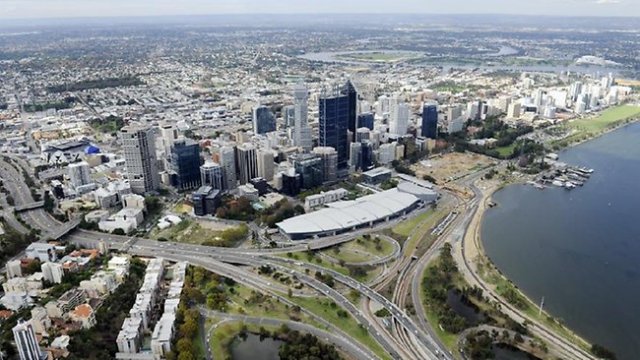
Australia's largest cities are urban planning disaster zones.
Two facts in particular bear this out. First is the ongoing housing affordability crisis, which shows no sign of abating. Second is the relentless march of car-dependent urban sprawl, which continues to devour remnant native vegetation and good farming land. You get an eyeful of this latter problem as you approach Perth by plane, by some accounts the second-biggest metropolis in the world by surface area.
One of the responses of the Western Australian government was to introduce Development Assessment Panels (DAPs). These bodies are empowered to assess any planning application worth more than $2 million. While the local council is still required to spend the time and money assessing an application, it can only make a recommendation to the DAP, which is made up of two representatives from the council and three government appointees.
A justification for introducing the DAPs was the claim that NIMBY councils were not complying with their own planning laws and were unreasonably blocking apartment developments, thereby contributing to urban sprawl.
Well, it is true that even modest urban "densification" can provoke fierce resistance from local residents, not least in the posh suburbs. No one complains more loudly about greedy capitalist developers than people with $2 million homes in leafy streets, particularly if there is even the hint that some of the units might be occupied by social housing tenants.
However, anyone who believes that their local council has contradicted its own planning scheme in making a decision either for or against a development application can already appeal the decision. Can stripping decision making away from democratically-elected representatives really create better cities?
A quick look at Fremantle, where I am a local councillor, tells a different story. Far from irrationally resisting any and every apartment development, the council has encouraged greater density, particularly in the town centre which has rows of empty shops as a result of the drift to the big private suburban shopping centres.
There is strong community consensus in favour of new apartments of a modest height (mostly 4 to 7 stories) with shopfronts at the ground level to create pedestrian activity and street activation.
But that does not mean any development goes. A recent application was recommended for refusal by the planning staff as not being compliant. Among the reasons was the absence of natural light to bedrooms, which had no external windows, a problem emphasised by a panel of independent architects appointed by the council to assess larger developments.
Council duly rejected the development, but the recommendation was overturned 2 votes to 3 by the DAP.
When coupled with the abysmal failure of the state government to invest in better public transport — in fact they are pushing for more freeways — their real urban planning agenda is revealed: more density where developers want it and more urban sprawl where developers want that too.
But there is density and then there is hyper-development. As a regular visitor to Sydney I'm stunned by the bulk and scale of development the NSW state government has allowed in its so-called Urban Renewal Corridors.
Yes, it makes sense to locate higher density urban form next to railway lines, but the majority of Sydney's rail network was built before World War II and these corridors are already quite dense.
To dramatically increase density and simultaneously induce more car use by spending $17 billion on the WestConnex tollway instead of public transport is sociopathic madness.
The housing affordability story is just as abysmal. There are about 100,000 people on the public housing waiting list but in no state or territory do either Liberal or Labor have any plan to seriously expand the supply to match demand or population growth.
There are occasional new initiatives, but mostly this just involves selling off older stock in more affluent areas to build new dwellings out in the suburbs, or transferring existing stock from the state to not-for-profit housing organisations.
What was once a mainstream housing option for many working-class people is being starved of funds and converted into a shrinking pool of last resort welfare housing. Australia also has some of the weakest protections for private renters in the OECD. The deliberate strangling of the public housing sector shows us what big business and their political servants in parliament would do to health and education if they could.
Creating healthy, liveable and sustainable cities requires us to liberate more housing and transport planning from the "free market".
Green Left Weekly is committed to covering this important social and environmental struggle. Unfortunately though, we cannot liberate our production costs from the free market just yet. As always, your donations keep us going.
Get in touch to see how you can help, or make a donation to the GLW Fighting Fund. You can do so by calling the toll-free number at 1800 634 206 (within Australia). Donations can also be made to Green Left Weekly, Commonwealth Bank, BSB 062-006, Account no. 00901992. Otherwise you can send a cheque or money order to PO Box 394, Broadway NSW 2007.
Like the article? Subscribe to Green Left now! You can also like us on Facebook and follow us on Twitter.